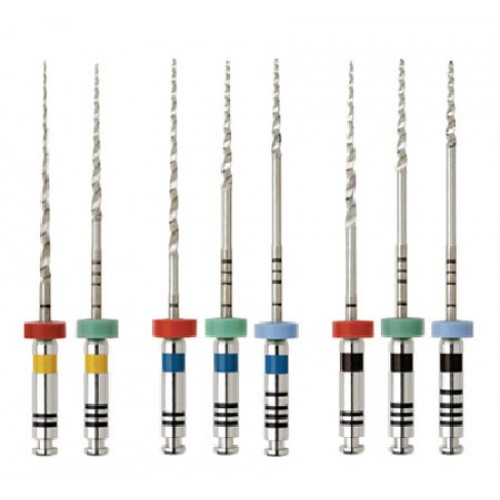Overview of endodontic instruments
Maschinenübersetzung
Der Originalartikel ist in RU Sprache (Link zum Lesen) geschrieben.
Every day, the dentist faces many clinical situations that require a conscious approach to diagnosis, accumulated knowledge and high quality treatment. Endodontics stands apart among all areas of dentistry, in order to get closer to the moment when you can call yourself an “endodontics guru”, a huge number of books must be read, seminars attended and experience gained.
Unique developments and advanced techniques for root canal treatment from recognized experts in the world of endodontics in the online course Online intensive in endodontics: modern tools, materials and protocols .
In the era of all kinds of devices in dentistry, including endodontics, one should not forget the rules for preparing a tooth for endodontic treatment, the stages and the need for one or another treatment method.
Proper preparation contributes to the effective removal of pulp residues and bacteria, as well as their metabolic products. It is important not to weaken the root during instrumentation, but to create conditions for excellent obturation of the root canal.
This article will provide basic information about standard endodontic instruments and root canal preparation techniques.
Standardization of endodontic instruments
In endodontics, a huge number of different endodontic instruments are used.
They differ in type, color, purpose, taper, material, length, which determines the standardization of endodontic instruments.
Color standardization - each tool number has its own color, which determines its size.
The sizes of instruments that are most often used in treatment are indicated in bold.
| Color code | ISO Tool Size Number |
| Pink | 06 |
| Grey | 08 |
| Violet | 10 |
| White | 15,45 , 90 |
| Yellow | 20,50,100 |
| Red | 25,55,110 |
| Blue | 30,60,120 |
| Green | 35,70 , 130 |
| Black | 40,80,140 |
The size of the tool is also determined by the number. If you take #35, that means it is 0.35mm in diameter.
The diameter of the tip is the projection of the cone of the working part onto a plane passing through the top of the tool and its median axis.
Geometric standardization involves designating each tool with a symbol.
The taper of the working part according to ISO is an increase in the diameter of the working part for each millimeter of length, most often by 0.02 mm. In this case the taper will be 2%. In addition to 02, there is a taper of 04, 06, 08, 10, 12.
The endodontic instrument has a handle of a characteristic color and a metal rod with a working part. If the total length of the rod can be 21, 25, 28, 31 mm, then the length of the working part always 16 mm!
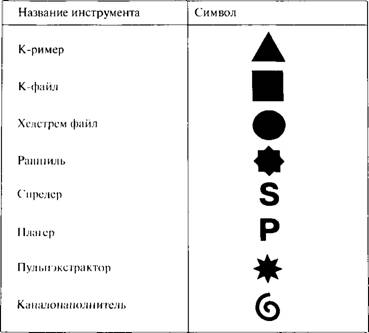
Endodontic instruments are classified according to their intended purpose:
- To expand the mouth of the root canal
- For root canal
- To determine the channel size
- To expand and level the canal walls
- To remove the contents of the root canal
- For root canal filling
Gates Glidden and Largo
To expand the root canal orifices, instruments with a non-aggressive tip are used, which give the orifice a funnel-shaped shape. The main widely used instruments include Gates Glidden and Peeso Reamer (Largo).
Gates Glidden, having a spear-shaped working part with a length of 15-19 mm and 6 sizes, is designed to expand the mouth and upper third of the root canal. The non-aggressive tip makes canal treatment atraumatic and prevents wall perforation.
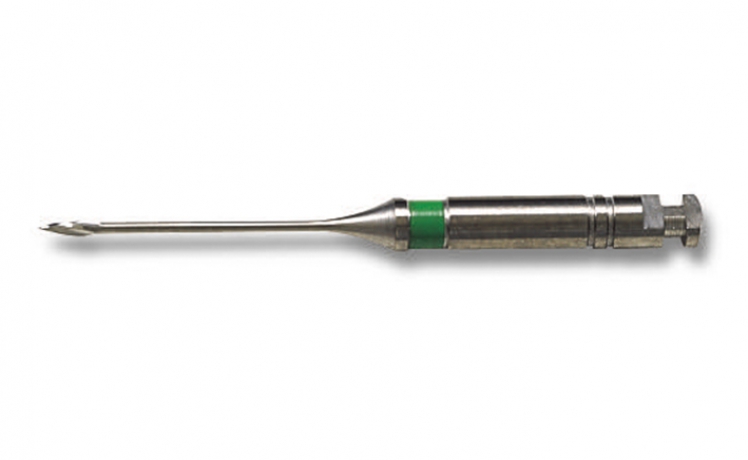
Peeso Reamer comes in 6 sizes, identified by the rings on the shank. The working part is elongated with a non-aggressive tip. It is used for processing the mouth of the palatal canal in upper molars, distal lower molars and canals in single-rooted teeth, as well as for unfilling the root canal for orthopedic structures.
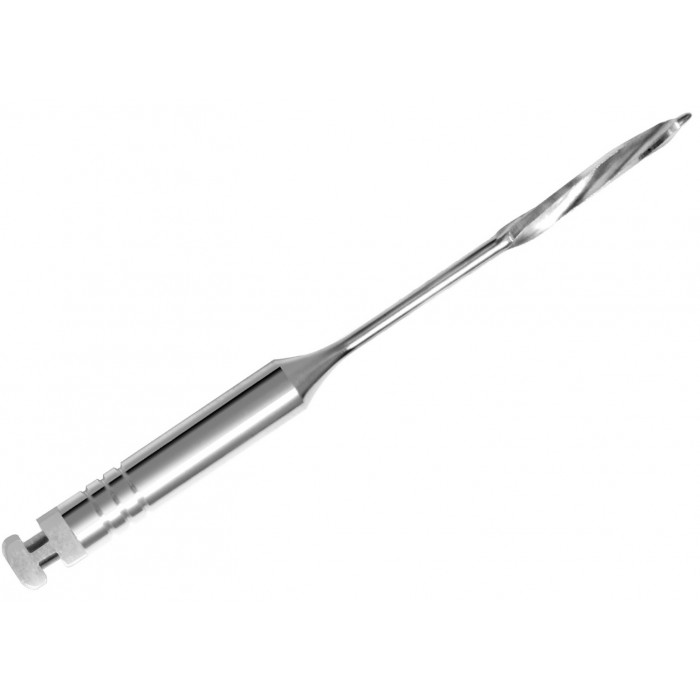
Tools for performing root canals
The main tool for performing root canals is the K-Reamer. The word "reamer" denotes a drilling motion, and the letter "K" is taken from the name of the Kerr company, the first company to produce tools using the screwing method. K-reamer has high cutting ability and increased flexibility. Has a BATT-tip (non-aggressive tip).
The K-Flexoreamer and K-Flexoreamer Golden Medium ranges are designed to fit curved and narrow canals due to their increased flexibility.
K-Flexoreamer Golden Medium , having intermediate sizes 12, 17, 22, 27, 32, 37, allows you to avoid difficulties in passing, jamming and breakage of the instrument in the canal.
Along with the previous tools, the Pathfinder tools have proven themselves to be excellent.
They have an elongated handle, minimal taper, an aggressive tip and a flexible working part, and are easy to use. They are used in obliterated and curved canals.
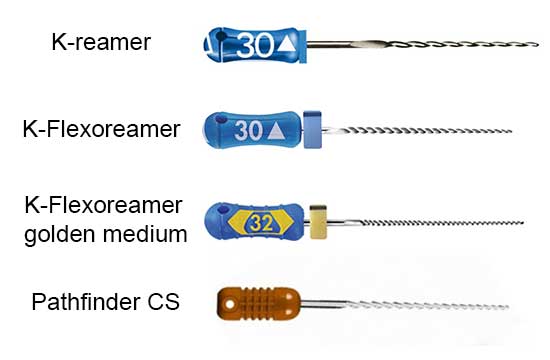
Tools for widening and leveling root canals
There are a variety of tools available for widening and leveling root canals. From various variations of hand-held K-files to machine tools, canal machining has now become much easier and of better quality.
K-file
The K-file itself is very similar to the K-reamer, differing from it only in the large number of turns per unit length. Up to No. 25, tetrahedral wire is used in manufacturing, which prevents the tool from jamming in the channel. Starting from No. 30, the triangular section gives the tool flexibility and machining efficiency even higher.
The K-file can be considered a universal tool, both for expanding the canal and for passing it. Working with it in the canal, they produce rotational movements, gradually going deeper in the canal.
K-Flexofile and K-Flexofile Golden Mediums have increased flexibility and a triangular cross-section, which reduces cross-sectional area.
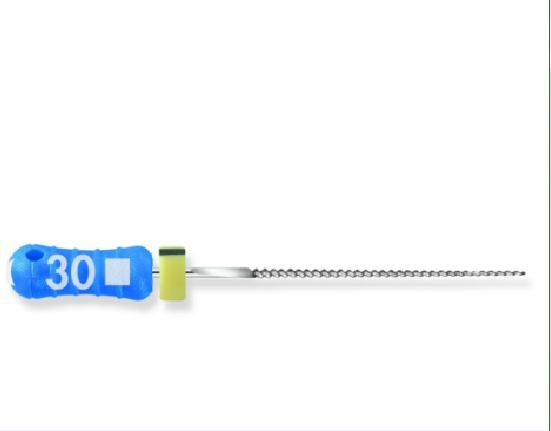
H-file
Hedstroem File, or the well-known H-file, is made of round wire with spiral cutting edges. It is more aggressive than previous tools, so when working you should never use movements screwing into the walls of the canal.
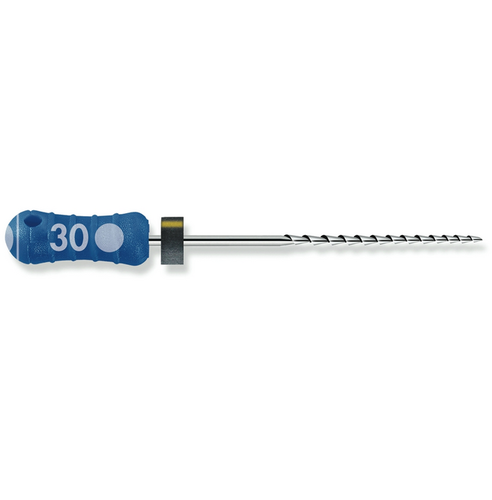
GT files
GT files are specific in that they have a taper of 06, 08, 10, 12, are made of NiTi alloy, and are equipped with an ergonomic handle. The movement of the curls on the working part is reversed, which prevents the instrument from jamming in the channel. The GT file is inserted into the canal, cut into the walls, scrolled 90-180 degrees, then scrolled clockwise again, cutting off the infected dentin. Thus, channel processing includes 4 instruments, and not the classic number of 10-14.
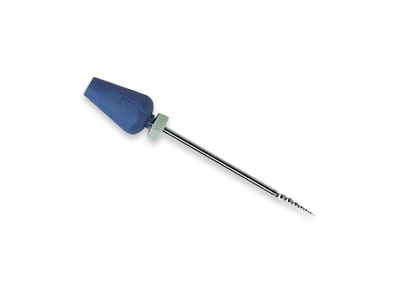
Machine GT-Rotary files are made of NiTi alloy, combined into 3 groups.
- In the first group there are only 4 GT-Rotary file tools, they have 2 colored rings on the shank, taper 12, 10, 08, 06 with a diameter of 0.2 mm, length 21 and 25 mm. They work using the Crown Down technique, alternately changing the taper from a larger one - 12, to a smaller one - 06.
- The second group also has 4 tools with 1 colored ring on the shank, all with a 4% taper. They differ in size, corresponding to ISO No. 20, 25, 30, 35. The apical third of the root canal is prepared with instruments of this group.
- The third group includes instruments with a 12% taper, which process the mouth of the canal, making it funnel-shaped.
Tools for removing the soft contents of pulp decay - pulp extractors
This group includes pulp extractors and root rasps. The pulp extractor is a conical rod with teeth with the sharp part facing the handle. The handle itself is made of twisted wire for better grip.
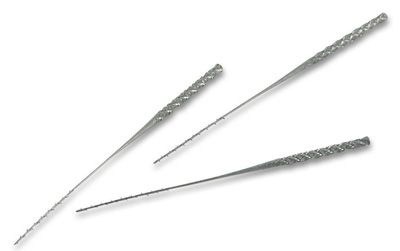
The principle of operation is simple - the instrument is inserted into the root canal without effort, rotated 2-3 turns and removed along with the decay of the pulp.
Root rasps are not as fragile as pulp extractors and can be used in curved canals. They can remove not only pulp, but also dentine filings.
In the absence of a rasp, the choice falls on K- and N-files.
Instruments for filling root canals
Channel filler
The canal filler is indispensable when applying calcium-containing pastes into the root canal or is an option for applying endosealant. The tool is a spiral of different sizes, twisted counterclockwise. When the instrument rotates, the paste is injected into the root canal. In addition to endodontic treatment, canal filler is used to add fixing material when cementing orthopedic intracanal structures.
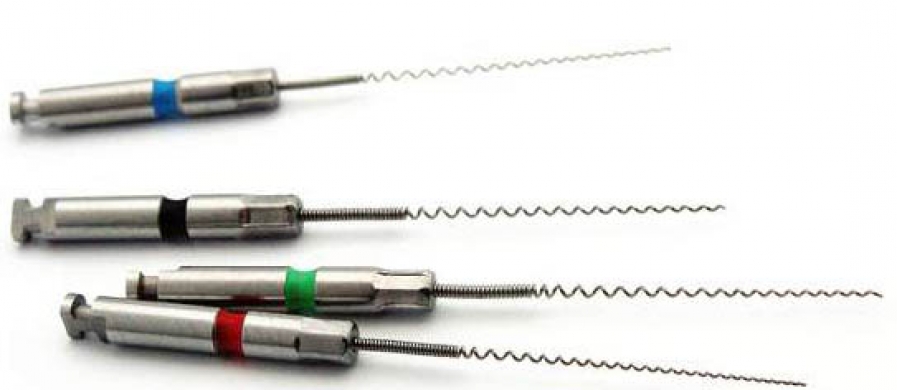
Spreader
The spreader resembles a standard file and has a cone-shaped smooth rod with a sharp tip. It is used in the technique of lateral condensation of gutta-percha pins in the canal.
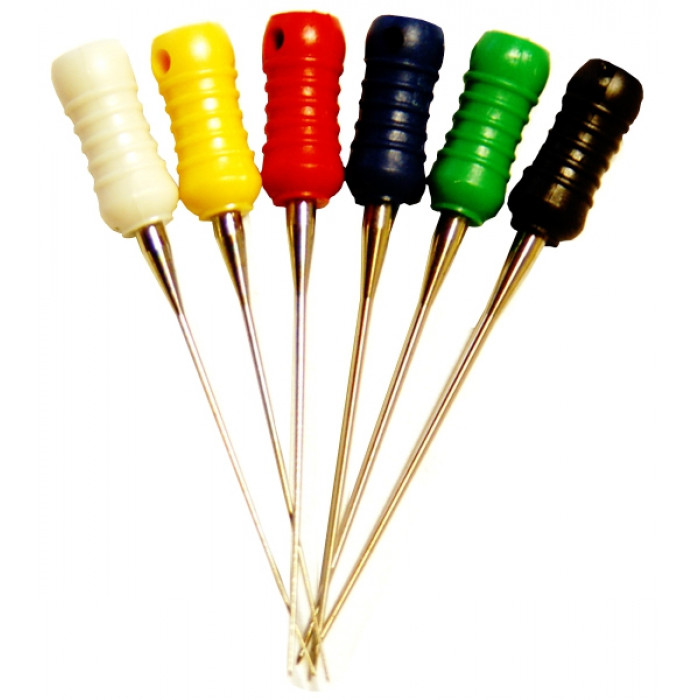
Plugger
A plugger is similar to a spreader, but unlike a spreader, it has a rounded top and is used for vertical condensation of gutta-percha.
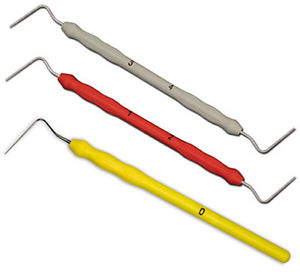
Gutta-condensor
Gutta-condensor is designed for a contra-angle handpiece; the working part looks like an inverted H-file. It is used for thermomechanical condensation of gutta-percha due to the release of heat during rotation of the instrument, which allows it to easily condense in the apex area.
A separate article will be devoted to root canal filling techniques in more detail.
Learn more about mechanical treatment of root canals using new generation instruments at the webinar Endodontics using NITI instruments .


